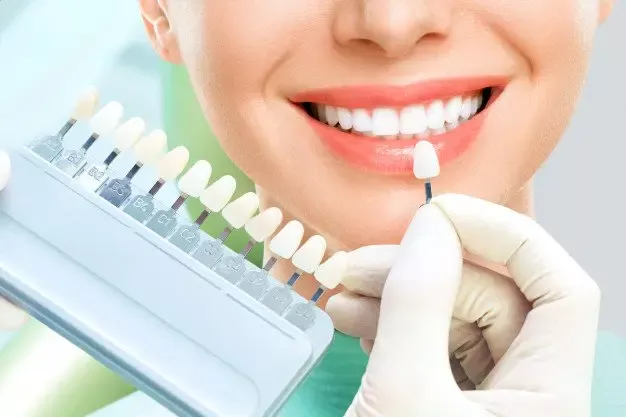Dental anxiety is a common condition affecting individuals across various age groups. It is characterized by an intense, uncontrollable fear of dental visits and procedures. This type of anxiety can stem from multiple sources, including negative past experiences, fear of pain, or a general aversion to medical settings. Understanding the root cause of dental anxiety is the first step in managing and overcoming it.
Common Causes of Dental Anxiety
- Past Traumatic Experiences: Negative experiences during previous dental visits can leave a lasting impression, leading to apprehension about future visits.
- Fear of Pain: Anxiety related to anticipated pain is a significant concern, particularly if individuals have previously experienced painful procedures.
- Loss of Control: The inability to see what is happening during treatment can create a sense of helplessness and fear.
- Embarrassment: Concerns about oral hygiene, the condition of teeth, or personal appearance can contribute to anxiety.
- Negative Portrayals: Media portrayals and certain societal attitudes towards dentists can reinforce fear.
Symptoms of Dental Anxiety
- Increased heart rate
- Sweating and trembling
- Shortness of breath or hyperventilation
- Nausea
- Dizziness or lightheadedness
- Avoidance of dental appointments
Psychological Implications
Dental anxiety can have broader implications for mental health. Chronic avoidance of dental care can lead to deterioration in oral health, resulting in a vicious cycle of increased fear and greater dental issues. This continuous cycle can diminish self-esteem and overall quality of life.
Ways to Identify Dental Anxiety
To accurately identify dental anxiety, consider the following methods:
- Questionnaires: Certain standardized questionnaires can determine the level of dental anxiety.
- Behavioral Assessments: Observations of a patient’s behavior in the dental office can offer insights.
- Patient Self Reports: Open communication between patients and dental professionals helps in identifying anxiety levels.
Importance of Addressing Dental Anxiety
Addressing dental anxiety is crucial not only for ensuring regular dental visits but also for maintaining overall health. Chronic oral health problems can lead to systemic issues such as cardiovascular disease. Effective management and treatment strategies can mitigate anxiety, leading to more frequent and productive dental care visits.
Understanding the multifaceted nature of dental anxiety is essential for developing tailored approaches to alleviate this common yet significant concern.
Importance of Dental Health
Proper dental health is crucial for overall well-being. It extends beyond the mouth, influencing physical health, appearance, and self confidence. Ignoring dental health can lead to a variety of medical conditions and cosmetic issues that impact an individual’s quality of life.
Physical Health Impact
- Cardiovascular Disease: Poor oral hygiene can lead to bacteria in the bloodstream, contributing to heart disease.
- Diabetes: There is a bidirectional link between gum disease and diabetes. Individuals with diabetes are more prone to infections, including periodontal disease.
- Respiratory Infections: Bacteria from periodontal disease can travel to the lungs, leading to pneumonia and other respiratory issues.
Preventative Care
Routine dental checkups are critical. They help:
- Identify Early Signs: Dentists can detect cavities, gum disease, and oral cancer at early stages.
- Professional Cleaning: Removing plaque and tartar prevents decay and gum problems.
- Maintaining Oral Health: Advice on proper brushing and flossing techniques to ensure long-term dental health.
Cosmetic Benefits
Good dental health is essential for a bright, attractive smile, impacting:
- Self-esteem: A healthy smile boosts confidence in social and professional situations.
- Speech: Proper dental structure aids clear speech and reduces issues caused by missing or misaligned teeth.
Impact on Mental Health
Fear and anxiety about dental visits affect many individuals. Ensuring good dental health can:
- Reduce Anxiety: Regular, positive dental experiences can help overcome fear.
- Boost Mental Well-being: A healthy mouth is pain-free, contributing to overall mental peace and reducing stress related to dental issues.
Age-related Concerns
Oral health impacts vary across different life stages:
- Children: Early dental care helps instill lifelong habits.
- Adults: Regular checkups prevent problems that could lead to costly and painful procedures.
- Elderly: Maintaining dental health is crucial to ensure nutrition and overall health, as compromised dental health can lead to dietary restrictions.
In summary, prioritizing dental health is an essential aspect of maintaining both physical and mental well-being.
Finding a Trustworthy Dentist
Locating a reliable dentist can significantly reduce anxiety related to dental visits. Here’s how to find a trustworthy dental professional:
- Seek Recommendations:
- Ask friends, family, and colleagues for dentist recommendations.
- Inquire about their experiences, the dentist’s demeanor, and the quality of care provided.
- Check Credentials:
- Verify the dentist’s credentials, including education and board certifications.
- Ensure they have the necessary state licenses to practice.
- Read Reviews:
- Browse online review platforms such as Google, Yelp, or Healthgrades.
- Pay attention to consistent positive feedback and any recurring concerns.
- Evaluate Experience:
- Consider how long the dentist has been practicing.
- Look for experience related to specific dental issues or procedures relevant to your needs.
- Visit the Office:
- Schedule a preliminary consultation to meet the dentist and staff.
- Observe the cleanliness of the office and the professionalism of the team.
- Ask Questions:
- Inquire about the dentist’s approach to patient care and their strategies for handling anxious patients.
- Ask about the technologies and methods they use to ensure comfort and efficiency.
- Assess Communication:
- Evaluate how the dentist communicates, ensuring they listen to concerns and explain procedures clearly.
- Gauge the overall comfort level during interactions.
- Check Emergency Procedures:
- Understand the dentist’s protocols for handling dental emergencies.
- Ensure they offer prompt and accessible emergency care.
Finding a dentist who makes patients feel comfortable and cared for can alleviate fears and improve the overall dental experience. By following these steps, one can confidently choose a dentist who meets personal and professional standards.
Effective Communication with Your Dentist
Proper communication with a dentist plays a crucial role in alleviating fears associated with dental visits. Patients should openly discuss their anxieties, past experiences, and specific concerns to establish mutual understanding and trust.
- Express Concerns:
- Clearly articulate any fears or concerns. Addressing issues such as fear of pain, previous negative experiences, or anxiety about specific procedures helps the dentist adapt their approach.
- Inform the dentist about any past experiences that might contribute to current fears.
- Ask Questions:
- Encourage asking detailed questions about procedures, expected sensations, and available options for pain relief. A well-informed patient feels more in control and less anxious.
- Seek clarification on post-procedure care to reduce uncertainties.
- Discuss Pain Management:
- Discuss pain management options, including local anesthesia, sedation, or other relaxation techniques. Understanding these options can greatly alleviate fear of discomfort.
- Ask about non-pharmacological techniques such as deep-breathing exercises or distraction methods.
- Agree on Signals:
- Establish non-verbal signals for immediate communication during procedures. Agreeing on signals like raising a hand can ensure the patient feels heard and can pause the procedure if needed.
- Talk About Treatment Plans:
- Discuss the entire treatment plan thoroughly, including timelines, costs, and expected outcomes. Knowing what to expect helps reduce anxiety.
- Review alternative treatment options and their implications.
- Review Safety Protocols:
- Go through the clinic’s safety and hygiene protocols. This reassures the patient about the sterility and professionalism of the practice.
- Highlight the dentist’s experience and credentials to build confidence in their skills.
Effective communication is an essential component in transforming a fearful dental visit into a more comfortable and controlled experience.
Relaxation Techniques Before a Dental Appointment
Experiencing anxiety before a dental appointment is common, but various relaxation techniques can help mitigate these feelings. Implementing these methods can make the visit to the dentist more manageable.
Deep Breathing Exercises
Deep breathing helps reduce anxiety by promoting relaxation. Before the appointment:
- Inhale deeply through the nose for four seconds.
- Hold the breath for seven seconds.
- Exhale slowly through the mouth for eight seconds.
- Repeat this cycle four to five times.
Progressive Muscle Relaxation
This technique involves tensing and then slowly relaxing different muscle groups to reduce physical tension. To practice:
- Start with the feet, tensing the muscles for five seconds.
- Gradually release the tension over 10 seconds.
- Move up through the body, targeting groups like calves, thighs, abdomen, and shoulders.
Visualization
Visualization involves creating a calm mental image to distract from anxiety. Follow these steps:
- Close the eyes and imagine a serene place like a beach or forest.
- Focus on the details, such as the sounds and scents.
- Spend several minutes in this mental space.
Listening to Calming Music
Music therapy can significantly reduce anxiety levels. Tips include:
- Create a playlist of favorite calming tracks.
- Listen to this playlist before and on the way to the appointment.
Guided Meditation
Guided meditation offers structured relaxation. Consider:
- Using apps or online recordings designed for relaxation.
- Following along with a guided session for 10 to 20 minutes before the appointment.
Aromatherapy
Aromatherapy uses scents to promote relaxation. Methods include:
- Using essential oils like lavender or chamomile.
- Applying oils to pulse points or using a diffuser at home.
Positive Affirmations
Positive affirmations help shift focus from fear to a calm state. Practice by:
- Repeating phrases like “I am calm and in control” or “I trust my dentist.”
- Saying these affirmations several times before the appointment.
Combatting pre-dental appointment anxiety requires a proactive approach, utilizing these relaxation techniques effectively.
Gradual Exposure Therapy
Gradual exposure therapy is an effective technique for overcoming dental anxiety, allowing individuals to slowly acclimate to the environment and procedures. This method involves breaking down the fear into manageable steps and progressively confronting each element.
Steps Involved in Gradual Exposure Therapy
- Identifying Specific Fears:
- Initial consultations focus on pinpointing the exact aspects of dental visits that cause anxiety.
- Possible fears may include the sound of drilling, the sight of needles, or the smell of antiseptic.
- Creating a Hierarchy of Fears:
- Rank the identified fears from least to most anxiety-provoking.
- This hierarchy acts as a roadmap for tackling the fears systematically.
- Beginning with the Least Fearful Step:
- Start with exposure to the mildest fear.
- For instance, visiting the dental clinic without undergoing any procedures.
- Gradual Progression:
- Gradually move up the hierarchy.
- Each step should only be taken once the individual feels comfortable with the previous one.
- Incorporating Relaxation Techniques:
- Techniques such as deep breathing, meditation, or listening to calming music can be used during each stage.
- This helps in managing physiological responses to anxiety.
Practical Application Examples
- Visual and Auditory Exposure:
- Viewing images or videos of dental procedures.
- Listening to the sounds associated with dental tools.
- Simulation Practice:
- Using dental models or simulators to familiarize with equipment.
- Practicing sitting in a dental chair for a specific period.
- Partial Procedures:
- Undergoing minor procedures like tooth cleaning before more invasive treatments.
- Simulated injections using non-needles to reduce needle-related anxiety.
Benefits of Gradual Exposure Therapy
- Building Trust:
- Encourages trust between the patient and the dental practitioners through repeated, positive experiences.
- Enhanced Coping Mechanisms:
- Develops better coping strategies by habituating to feared stimuli over time.
- Reduced Avoidance Behavior:
- Reduces avoidance behavior, thus promoting regular dental care.
or dentist, leading to a more relaxed and routine approach to dental visits.
Bringing a Support Person
Having a trusted individual accompany one to the dental appointment can significantly alleviate anxiety and fear. This person serves multiple roles, including providing emotional support and acting as a calming presence throughout the visit.
Benefits of Bringing a Support Person
- Emotional Stability: A familiar face can offer reassurance, reducing stress levels. Their presence can ease pre-appointment jitters and provide comfort during the procedure.
- Distraction: Engaging in light conversation with the support person can divert the focus from the impending dental work. This helps in maintaining a calmer demeanor.
- Advocacy: They can communicate the patient’s concerns and fears to the dentist. Any apprehensions or specific requests the patient might hesitate to express can be conveyed by the support person.
- Assistance Post-Procedure: Post-treatment care is often necessary. Whether it’s driving the patient back home or ensuring they follow post-procedure instructions, a support person can be invaluable.
Choosing the Right Support Person
Not everyone is suitable to fulfill this role effectively. It is crucial to select someone who is understanding and capable of providing genuine support. Consider the following traits:
- Empathy: The individual should be sensitive to emotional needs and provide comfort without judgment.
- Patience: Dental visits can sometimes be prolonged. They must possess the patience to stay by the patient’s side throughout the duration.
- Dependability: Reliability is essential. They should be punctual and committed to assisting the patient fully.
Preparation Before the Appointment
- Discuss the Plan: Ensure the support person is aware of the schedule and any specific needs or requests.
- Pack Essentials: Light snacks, water, and reading material for the support person, if allowed in the waiting room.
- Emergency Protocols: Brief the support person on emergency contacts and the patient’s medical history if necessary.
Role During the Appointment
- Stay Calm: A composed demeanor can help in keeping the patient relaxed.
- Maintain Positive Conversation: Encouraging words and positive reinforcement can significantly reduce anxiety levels.
- Assist with Communication: Ensure all queries and concerns are addressed by facilitating communication with the dental staff.
Bringing a support person can transform the dental visit from a daunting task to a manageable experience, significantly contributing to overcoming dental anxiety and fear.
Utilizing Modern Dental Anesthesia
Modern dental anesthesia techniques have revolutionized patient comfort in dental practices. By embracing these advancements, patients can significantly alleviate anxiety associated with dental procedures. Various types of anesthesia are available, tailored to meet individual needs based on the complexity of the procedure and patient medical history.
Local Anesthesia
Local anesthesia is utilized to numb specific areas of the mouth, ensuring that the patient does not experience pain during treatment.
- Injection: The administration involves an injection of anesthetic agents like lidocaine.
- Topical Anesthetics: Prior to injection, topical anesthetics are often applied to minimize initial discomfort.
Sedation Dentistry
Sedation dentistry employs medications to help patients relax during dental procedures. Levels of sedation vary:
- Minimal Sedation: Patients remain awake but relaxed.
- Moderate Sedation: Patients may slur words and not remember much of the procedure.
- Deep Sedation: Patients are on the edge of consciousness but can still be awakened.
- General Anesthesia: Patients remain completely unconscious during the procedure.
Inhalation Sedation
Commonly known as laughing gas, nitrous oxide is a safe and effective sedative agent.
- Application: Administered through a mask, patients inhale the gas mixed with oxygen.
- Effects: Induces a state of relaxation and euphoria, reducing anxiety without the loss of consciousness.
Intravenous (IV) Sedation
IV sedation involves administering sedatives directly into the bloodstream.
- Rapid Onset: Effects are immediate, and dosages can be adjusted throughout the procedure.
- Depth of Sedation: This method offers more profound sedation compared to other techniques.
Oral Sedation
Oral sedation includes ingesting sedative pills prior to the procedure.
- Common Medications: Medications like diazepam provide a calming effect.
- Onset and Duration: Effects may take longer to manifest, requiring timing coordination with the dental appointment.
Benefits of Modern Anesthesia
Modern anesthesia enhances patient experience significantly:
- Reduced Pain and Anxiety: Patients are more relaxed, minimizing stress-related complications.
- Improved Procedure Efficiency: Calm patients allow for smoother and potentially shorter procedures.
- Accessibility: Offers dental care to those with severe anxiety, previously avoiding necessary treatments.
By integrating these modern approaches, dental professionals create a more welcoming environment, encouraging regular dental visits and promoting overall oral health.
Distracting Yourself During the Procedure
Dental visits can provoke significant anxiety in some patients. Utilizing distraction techniques can help mitigate this stress. Here are several methods that can be effective:
Audio Distractions
Listening to music or a podcast can serve as an excellent distraction. Patients may:
- Bring headphones and their favorite playlist to help stay calm.
- Choose audio books, which can provide an engrossing distraction.
- Consider calming music or nature sounds for a soothing effect.
Visual Distractions
Visual elements can offer another layer of distraction. Options include:
- Wearing virtual reality (VR) glasses that play a movie or show.
- Requesting the dentist to position a screen overhead that displays calming visuals.
- Watching a video on a personal device with the dentist’s permission.
Tactile Distractions
Physical objects can help divert attention from dental procedures:
- Stress balls or fidget spinners can be held during the visit.
- Bringing a favorite blanket or soft item for comfort.
- Wearing a weighted blanket to help reduce anxiety.
Mental Distractions
Engaging the mind can also be highly effective:
- Practice deep breathing exercises to focus the mind on breath control.
- Use visualization techniques to imagine being in a calm, serene place.
- Engage in mental puzzles like counting backwards or reciting a favorite poem.
Communication with Dental Staff
Open communication with the dental team is crucial:
- Informing the dentist and staff about specific anxieties can help them provide better support.
- Establishing a hand signal to indicate the need for a short break can help alleviate stress.
- Asking questions about the procedure to demystify the process can reduce anxiety.
Medication and Sedation
For those with severe anxiety, additional options might be necessary:
- Discussing with the dentist the possibility of anti-anxiety medications or sedatives.
- Considering nitrous oxide, commonly known as laughing gas, to help relax during the procedure.
Using these distraction techniques can make dental visits more bearable and less anxiety-inducing, contributing significantly towards overcoming the fear of going to the dentist.
Post Appointment Positive Reinforcement
Positive reinforcement after a dental appointment can help diminish fear and create a more encouraging outlook towards future visits. Implementing this strategy can support building a strong, optimistic relationship with dental care.
Reward System
Setting up a reward system can be highly effective:
- Personal Treats: Encourage treating oneself to something enjoyable but healthy, such as a favorite activity, a movie, or a small gift.
- Social Incentives: Arrange a fun activity with friends or family afterward to create positive associations.
- Milestone Celebrations: Celebrate significant milestones such as painless visits or successful treatments with larger rewards.
Acknowledgement and Praise
Acknowledgement of the effort taken to face the dental visit can significantly reinforce positive attitudes:
- Self-Praise: Encourage recognizing personal courage and progress in managing dental anxieties.
- External Validation: Seek validation from trusted friends or family members who can offer praise and support.
Journal and Reflect
Maintain a journal to record experiences and reflections:
- Documenting Progress: Track successful visits, noting improvements and coping strategies that worked well.
- Emotional Reflection: Reflect on feelings before and after appointments to understand and better manage anxieties.
Engage with Mental Health Practices
Implementing specific mental health practices can provide ongoing support:
- Mindfulness Techniques: Use mindfulness or meditation to reduce stress before, during, and after the visit.
- Therapist Support: Regular conversations with a therapist can provide additional strategies and support for overcoming dental fear.
Consistent Regular Appointments
Schedule and maintain consistent dental appointments to build familiarity:
- Routine Visits: Regular visits help normalize the experience, reducing the novelty and fear associated with rare visits.
- Follow-Up Appointments: Scheduling follow-up appointments immediately can reinforce the regularity and predictability of dental care.
By integrating these methods, dental visits can become less stressful, making it easier to maintain oral health and well-being.
Digital Tools and Apps for Dental Anxiety
Technology has provided innovative solutions to help patients manage dental anxiety. Various digital tools and apps are designed specifically to alleviate the fear many individuals experience before, during, and after dental appointments.
Virtual Reality (VR) and Augmented Reality (AR)
- VR Headsets: These devices immerse patients in calming virtual environments during dental procedures, distracting them from the clinical setting.
- AR Applications: Augmented reality can simulate dental procedures, helping patients understand what to expect and reducing fear of the unknown.
Relaxation and Meditation Apps
- Calm: Offers guided meditations, relaxing music, and sleep stories that can be used in the waiting room or during procedures.
- Headspace: Provides mindfulness techniques specifically designed for stress relief and anxiety management, including sessions focused on healthcare-related anxiety.
Telehealth Consultations
- Dental Consultations via Video Call: Many dental practices now offer initial consultations through telehealth platforms, allowing patients to discuss their concerns and treatment plans in a familiar, low-pressure environment.
- Virtual Mock Visits: Patients can virtually tour the dental office and meet dental staff to familiarize themselves before an actual visit.
Cognitive Behavioral Therapy (CBT) Apps
- Woebot: An artificial intelligence driven app that uses CBT principles to help manage and reduce anxiety through daily check ins and supportive conversations.
- CBT-i Coach: Developed by the Department of Veterans Affairs, it offers strategies for managing anxiety, stress, and insomnia, often linked with dental fear.
Gamification and Interactive Tools
- Dental Fear Central: A website offering interactive tools such as fear hierarchy planners and success stories to make overcoming dental anxiety more engaging.
- Therapeutic Games: Apps like SuperBetter use game mechanics to build resilience and reduce dental-related anxiety by setting achievable mental health goals.
Educational Videos and Animations
- YouTube Educational Channels: Channels such as Animated Teeth and Dental Fear Central’s YouTube page provide visual explanations of procedures, helping demystify dental treatments.
- Procedure Simulation Apps: Digital simulations explain the steps of various dental procedures, thereby eliminating fear stemming from uncertainty.
Biofeedback Devices
- Muse: A headband that provides real-time feedback on brain activity, heart rate, and breathing patterns, teaching users to manage anxiety through biofeedback techniques.
- Spire Stone: A small wearable device monitoring breathing patterns to alert users of increased stress, encouraging relaxation exercises to mitigate anxiety before and during dental visits.
Seeking Professional Help if Necessary
For individuals experiencing severe dental anxiety, seeking professional help can be an effective solution. Several methods and approaches by trained professionals can be utilized to address and manage this type of fear.
Types of Professional Help
- Cognitive Behavioral Therapy (CBT):
- Behavioral interventions specifically tailored to deal with dental phobia.
- Helps reframe negative thoughts associated with dental visits.
- Exposure Therapy:
- Gradual exposure to the dental environment, starting from simple tasks like sitting in the waiting room.
- Helps desensitize individuals to triggers related to their fear.
- Medication:
- Short term medication prescribed to alleviate severe anxiety symptoms.
- Options include anti anxiety medications and sedatives to be used before or during dental procedures.
How to Finding a Suitable Professional
- Referrals:
- Primary care physicians or general practitioners can provide referrals to specialists experienced in dealing with dental anxiety.
- Specialized Dentists:
- Some dental practitioners specialize in treating patients with significant dental fears.
- These dentists may employ techniques and environment setups that cater specifically to anxious patients.
- Licensed Therapists:
- Seeking a licensed psychologist or therapist who focuses on anxiety disorders can be beneficial.
- They can offer structured programs designed to cope with anxiety and fears.
Preparing for Professional Help
- Initial Consultation:
- Schedule an initial consultation to discuss the extent of dental fear.
- Provides an opportunity to understand the treatment approach and expected outcomes.
- Setting Realistic Goals:
- Set achievable goals with the professional to gradually reduce anxiety.
- Emphasize incremental progress rather than immediate results.
Tips for Making the Most Out of Professional Help
- Communicate Openly:
- Share all concerns and fears with the professional.
- Openness ensures that the treatment plan effectively targets specific anxiety triggers.
- Commitment to the Process:
- Regular attendance and active participation in sessions are essential.
- Continued effort and engagement maximize the likelihood of overcoming dental anxiety.
- Follow Up:
- Schedule and attend follow up sessions to sustain progress.
- Regular check ins help to monitor and adapt the approach as needed.















